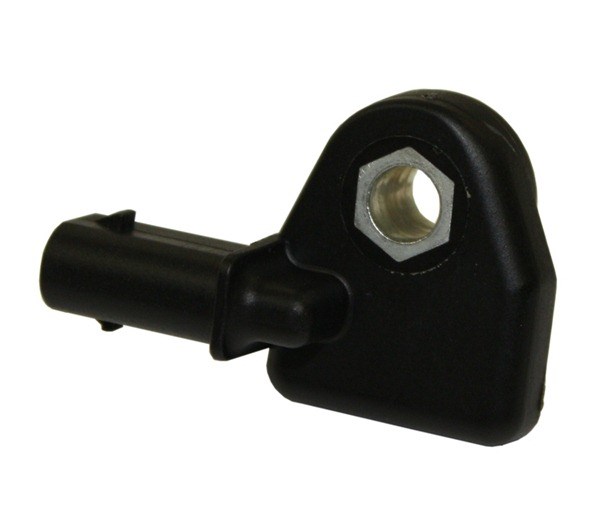TRW Multi-Axis Acceleration Sensors Developed
Admittedly, this appears to be nothing more than a plastic molded part with an inserted bolt-shaped metal component.
#electronics
Admittedly, this appears to be nothing more than a plastic molded part with an inserted bolt-shaped metal component.
What you can’t see is what it can do. It is a remote acceleration sensor (RAS) that TRW Automotive has developed. It’s capable of detecting impacts from more than one direction simultaneously, unlike traditional accelerometers, which are good for measuring acceleration data longitudinally (X-axis, or head-on) or laterally (Y-axis, or side).
So by mounting the multi-axis RAS in a B-pillar, for example, it can improve impact detection, as required by FMVSS214, as well as providing the intermediate crash sensing performance that can permit some vehicles to meet European regulations without the need for additional front-mounted sensors.

Martin Thoone, vice president, TRW Global Electronics engineering, said, “In some frontal accident scenarios—such as pole impacts near the center of the vehicle—impact may not be rapidly detected by traditional chassis-rail-mounted RAS single-axis sensors due to the relative lack of rigidity in this area of the vehicle. Front dual-axis RAS with Y-axis sensing can detect the lateral deformation of the vehicle sheet metal around the pole and more quickly sense that an impact has taken place.”
In addition to which, it is possible for a multi-axis sensor to measure vertical (Z-axis) and lateral acceleration, thereby predicting a rollover event without the need for a dedicated roll gyro.
All that in what appears to be not much.
RELATED CONTENT
-
Jeeps Modified for Moab
On Easter morning in Moab, Utah, when the population of that exceedingly-hard-to-get-to town in one of the most beautiful settings on Earth has more than doubled, some people won’t be hunting for Easter eggs, but will be trying to get a good look at one of the vehicles six that Jeep has prepared for real-life, fast-feedback from the assembled at the annual Easter Jeep Safari.
-
On BMW Tech, VW Golf R Variant, Hyundai Elantra, and More
The forthcoming BMW flagship SUV—the 2022 iX xDrive50—has a lot of tech, some that is deliberately discrete. The Hawaiians spend a lot of money for gasoline and it would be less if they’d electrify. Euro drivers like wagons—and apparently extreme driving in them. Stellantis is spending big on going electric. And even more.
-
Increasing Use of Structural Adhesives in Automotive
Can you glue a car together? Frank Billotto of DuPont Transportation & Industrial discusses the major role structural adhesives can play in vehicle assembly.


.jpg;width=70;height=70;mode=crop)






